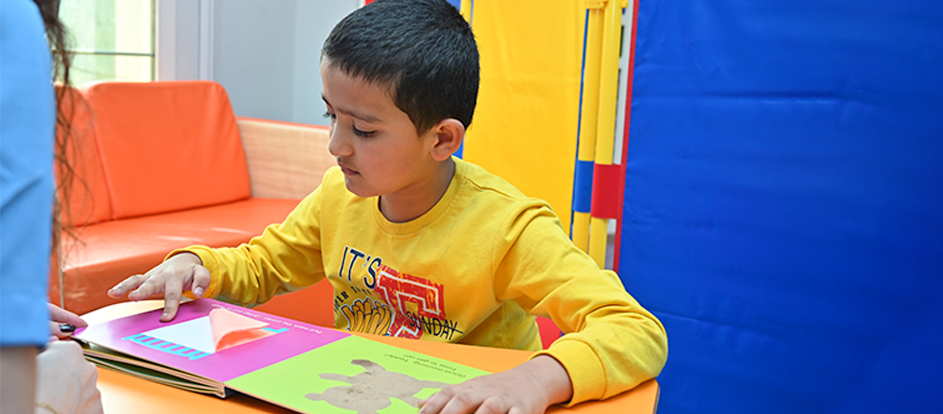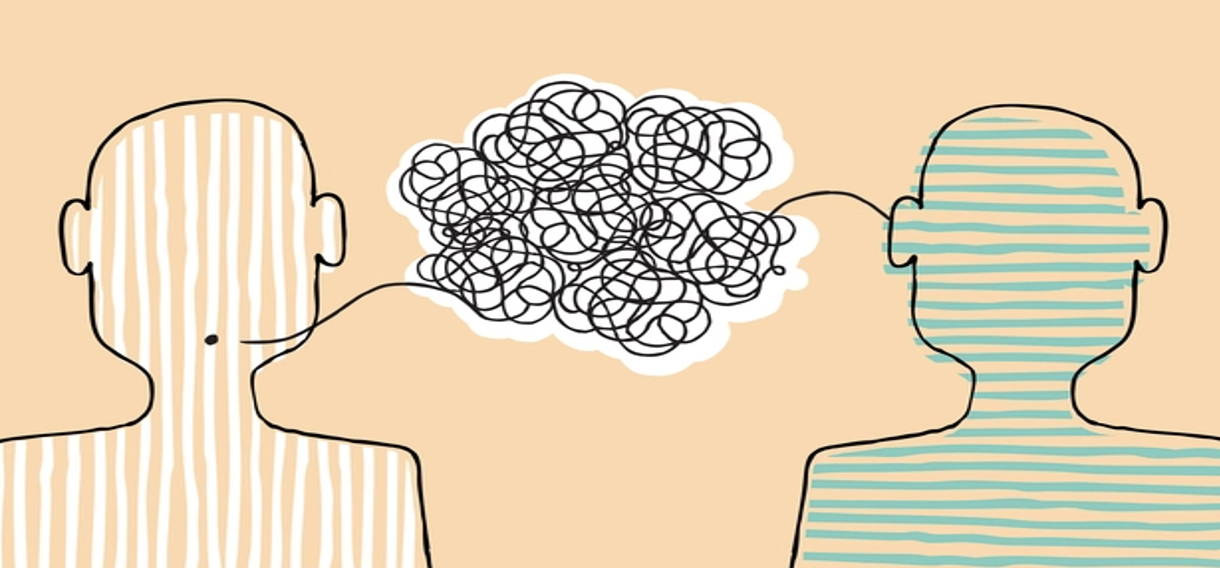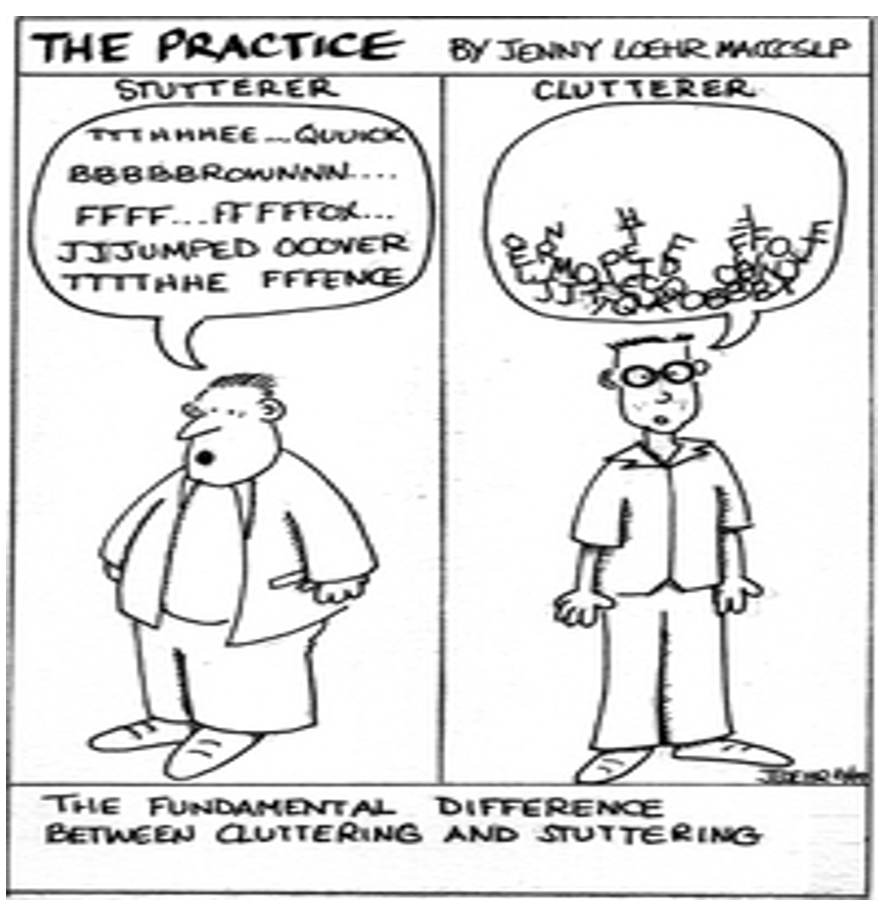
Imagine you are on the phone with your best friend and you want to share your experience at an event you recently attended. You attempt to describe the fun you had, the people you met, and the delicious food you ate; however, words come out of your mouth so fast that your friend keeps asking “say it again” or “can you slow down”. You try to accommodate your friend’s request only to realize that they lost interest and provide you with such answers as “okay”, “hmmm” and “good”. Would you not feel frustrated, ashamed, or sad?
Now, imagine a 5-year-old school boy who knows the answer to the question the teacher just asked, yet he avoids sharing it in front of the class because he knows when he speaks his words will not come out smoothly. Would this not impact his feelings and conversations with others?

Situations such as those presented above happen to individuals with fluency disorders.
First, let’s examine what communication is and how it happens. Communication happens between a speaker and a listener, the message and information are transferred from the speaker to the listener. Its effectiveness depends on how much of the message has been delivered by the speaker and understood by the listener. If the fluency of the speech is fast, irregular, or slow the communication may not be effective.
What is fluency of speech?
Fluency is the aspect of speech production that refers to continuity, smoothness, rate, and effort. Continuity here refers to the flow and sequences of thoughts and ideas to be communicated to the listener. Smoothness is how the listener perceives the speech: smooth, jerky, or slurred. The rate of speech is the number of the syllables uttered by an individual in a minute—when many syllables are uttered in a short period of time, the rate of speech is fast while when few syllables are uttered in a longer period of time, the rate of speech is slow. Lastly, the effort is the physical tension, or the evident stress observed while speaking or producing speech.
Speech examples
Example 1
“I waaaaant to g-g-go to the mmmmmall and bbbbuy a dress for mmmyy f-f-riend.”
Example 2
“I went to ay no you know like all. Ummm yeah I want to buy shirt mmmm no jeans yeah in the mall. The size of jeans yes blue no I went out of the mall. ize was not right my mum said its ot and I went ay.”
The above highlighted speech instances are impacting the continuity, smoothness and rate of speech and you may observe a physical tension (blinking of eyes, head movement, lip tightening etc.) while talking to the individual face to face.
In the first example, the rate of speech is slow as the speaker takes time to utter their words while in the second example, the speaker’s rate of speech may be faster as you may observe omissions, injections and revisions impacting the communication effectiveness.
Fluency disorders
When you perceive the speech rate of a speaker as fast, irregular, or slow, their communication effectiveness might be impaired.
Dysfluent speech is the disruption of the forward flow and timing of speech by repetition of sounds, syllables or words, sound prolongation and/or blocking on sounds, silent or audible, (Bloodstein & Bernstein Ratner 2008).
The fluency disorders are as follows:
- Stuttering
- Cluttering
Stuttering/Stammering
Stuttering is a fluency disorder in which there are excessive disfluencies in the speaker’s speech and the rate of speech is mostly slower than that of the typical hence impacting the effectiveness of communication.
How to identify stuttering?
We all are disfluent at some point in time. Does this mean we all are stutterers? Yes, we all have disfluent speech instances. An awkward pause between words while talking to our boss. A weird interjection like “umm”,“ahhh” while giving an important presentation.
When we were learning the extraordinary skill of talking as toddlers, our desire to communicate exceeded our communicative ability, leading to certain disfluencies such as word repetitions, hesitations, and revisions as in “Come come come here” or “Emmm I want to go out out”. Such disfluencies are part of normal language development and are due to confusing thoughts, uncertainty about an event, or complex word structures.
Normal disfluencies vs atypical disfluencies
Normal disfluencies
Some disfluencies of speech are part of normal language development, including:
- Interjections “Ummmmmmm… please I want coke.”
- Revisions “You are – you are good.”
Atypical disfluencies
Atypical disfluencies impact the rate of speech, continuity, and smoothness and include:
- Syllable repetitions “Ou-ou-outside, I have kept the b-b-box.”
- Sound prolongations “Wwwhat have you mmmmade for dinner?”
Atypical disfluencies lead to a slow rate of speech and hinder the effectiveness of communication.
Cluttering
Cluttering is a communication disorder in which the perceived rate of speech is too fast or irregular. The speaker exhibits excessive normal disfluencies, blending /dropping a sound or syllable and abnormal placement of pauses.
Cluttered speech is often perceived as jerky and slurred. The person who clutters typically has little awareness of their speech problem; however the listener may have difficulty in comprehending the intention of the speaker because words and ideas are presented in a disorganized manner.
Schoolteachers, friends and family members may describe the child who clutters as “having a hard time getting to the point”, “talking in circles”, or “having a speech that is very disorganized and difficult to understand”.
Example:
“He his father, no wait, ummmmm the my brother decided to uhhhh well he was, it kind of you know well hire um my brother.”
Speech therapy and fluency disorders
Speech therapy for stuttering aims to reduce the disfluent instances in the speech of an individual by replacing the disfluencies with fluent speech and teaching the person strategies that help them achieve more fluent instances and practicing them in different social contexts. Strategies include teaching the individual to start pronouncing the first word of a sentence slowly before taking a deep breath and then starting to speak, chunking the sentence into 2-3 parts.
When the person’s stuttering is mostly caused by the fear of stuttering itself, speech therapy may focus on cancellations rather than replacing the disfluencies to fluent instances, teaching the person to pronounce problematic words more fluently.
Speech therapy for cluttering focuses on self-monitoring skills as the person who clutters is not aware of their speech problem. These self-monitoring skills are reinforced by recording the person while speaking and then making them listen to their audio recordings to help them pinpoint their disfluencies. The therapy also focuses on helping the person slow down their speech rate.

High Hopes’ speech and language therapists are experienced in building your child’s language skills and are happy to answer any questions you may have. Contact us today to learn more.
Sources:
- Book: A Primer for Stuttering Therapy, Schwartz, H.D Allyn and Baco,1998.
- Myers, F. L. (1992). Cluttering: A synergistic framework. In F. L. Myers & K. O. St. Louis (Eds.), Cluttering: A clinical perspective (pp. 71–84).
- Leicester, UK: Far Communications. (Reissued in 1996 by Singular, San Diego, CA).
- Bloodstein, Oliver, Nan Bernstein Ratner, and Shelley B. Brundage. A handbook on stuttering. Plural Publishing, 2021.
- Packman, Ann. “Theory and therapy in stuttering: A complex relationship.” Journal of fluency disorders 37, no. 4 (2012): 225-233.
- https://www.asha.org/public/speech/disorders/stuttering/





